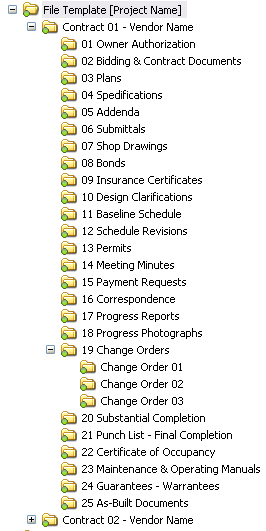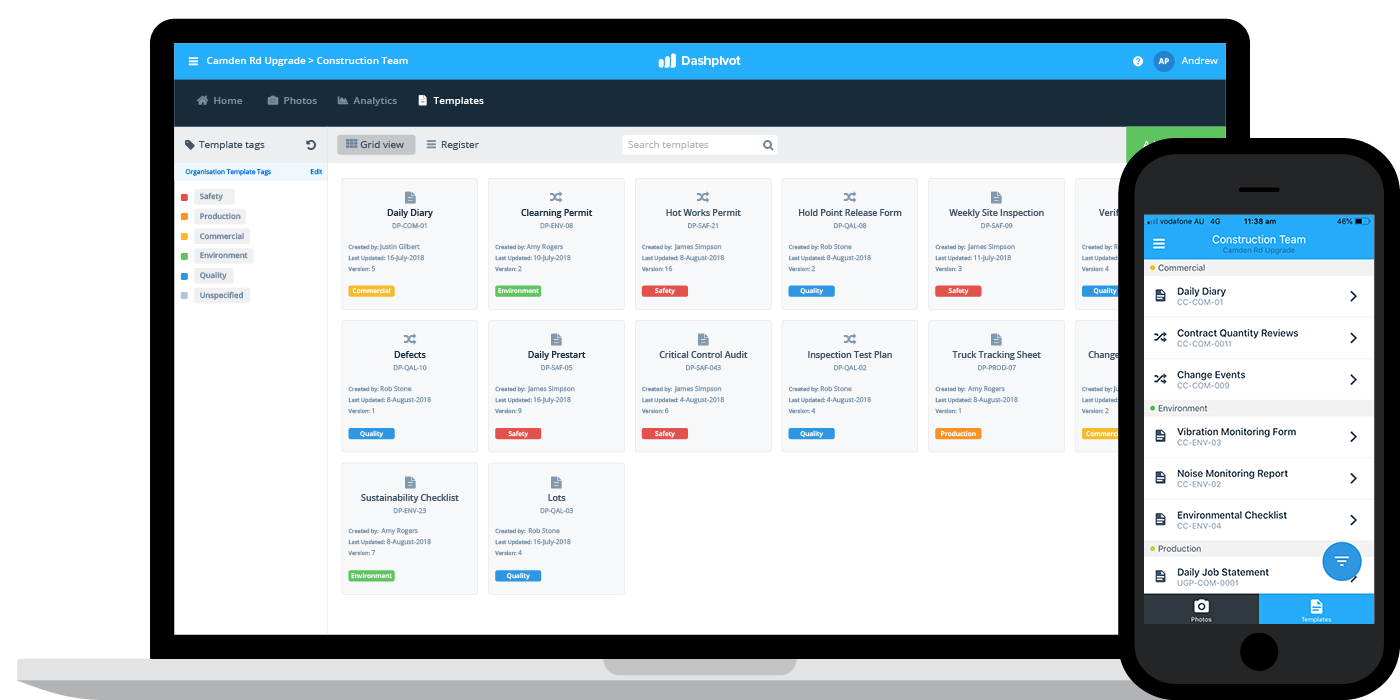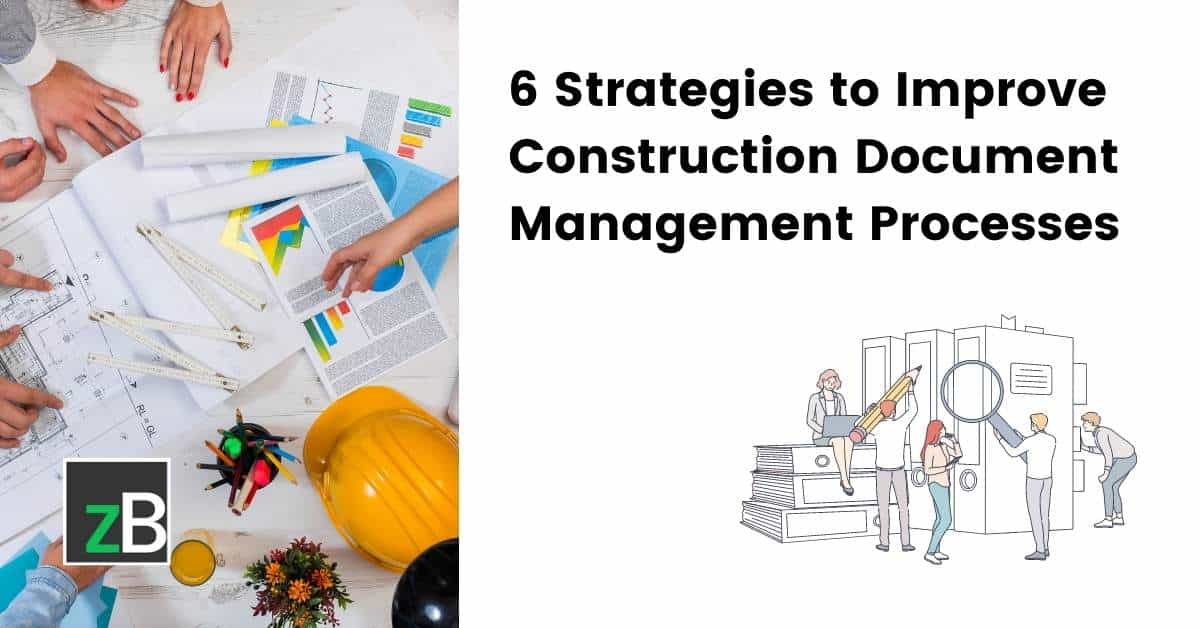Enhance Your Workflow: Construction Document Management Made Easy
Enhance Your Workflow: Construction Document Management Made Easy
Blog Article
Engineer's Overview to Simplifying Construction File Monitoring for Efficient Project Execution
The procedure of organizing, sharing, and keeping these records can commonly end up being a maze of ineffectiveness and setbacks if not dealt with carefully. By checking out systematic methods, cutting-edge devices, and market best techniques, engineers can not only simplify their record monitoring processes but likewise lead the means for extra efficient task implementation.
Importance of Efficient Document Monitoring
Reliable file administration is crucial for architects in the building and construction sector as it plays an essential function in ensuring the effective execution of projects. Appropriate organization and management of these papers are necessary to preserve job timelines, guarantee compliance with policies, and facilitate reliable interaction among task stakeholders.

Reliable record management makes it possible for engineers to access critical information immediately, track project development precisely, and reduce threats linked with errors or omissions. By executing streamlined file management processes, engineers can boost partnership with clients, service providers, and various other group participants, bring about improved job results and client fulfillment.
Additionally, efficient file management aids architects preserve a comprehensive task background, enabling them to leverage past experiences and lessons discovered for future projects. In today's busy building sector, where timely decision-making and information sharing are vital, reliable file monitoring is a foundation for success.
Approaches for Simplifying File Company
Effective record administration practices not just ensure task success for architects in the building industry however also lay the foundation for implementing techniques for simplifying file company. To improve record organization efficiently, architects must first establish a clear identifying convention for files and folders. Uniformity in calling files based on task stages, file types, and pertinent information will assist in very easy retrieval and lower confusion.
Using cloud-based storage services can also boost document organization by offering a centralized place for all project-related documents - construction document management. This enables staff member to access the most up-to-date documents from anywhere, advertising collaboration and efficiency. Carrying out version control mechanisms further refines document company by tracking adjustments, protecting against contrasting edits, and making sure that the newest variations are constantly available
In addition, developing a rational folder structure with marked subfolders for various file classifications, such as illustrations, requirements, and agreements, can simplify record administration procedures. On a regular basis examining and removing out-of-date or redundant files will certainly aid maintain a lean and well organized record database, inevitably improving performance and project results.
Leveraging Innovation Tools for Collaboration
In the realm of modern-day architecture, designers are progressively depending on sophisticated technology tools to foster seamless collaboration amongst job stakeholders. Leveraging technology for collaboration enhances interaction, improves efficiency, and boosts total project end results. Cloud-based systems such as BIM 360 and Procore permit real-time access to project files, enabling clients, specialists, and designers to work together properly despite their physical place. These tools facilitate concurrent modifying, version control, and immediate updates, lowering mistakes and delays brought on by miscommunications.
Virtual layout and construction (VDC) software like Revit and AutoCAD Architecture allow designers to create thorough 3D versions that can be shared and edited collaboratively. This real-time collaboration boosts design visualization, control, and accuracy, causing better decision-making throughout the project lifecycle. Additionally, interaction tools like Slack and Microsoft Teams supply instantaneous messaging, data sharing, and video conferencing capacities, cultivating seamless interaction amongst staff member and stakeholders.
Making Certain Precision and Variation Control

Reliable version control additionally assists in handling record approvals and ensuring that only accredited personnel make alterations. Architects need to establish clear procedures for recording adjustments, consisting of timestamps and user recognition, to create an audit route for responsibility. Routinely interacting with the task team about version updates and changes is necessary to prevent complication and keep home placement throughout the building procedure.
Ideal Practices for File Sharing and Gain Access To
Having established a robust system for version control in construction document management, architects can now focus on maximizing record sharing and accessibility approaches to boost cooperation and performance among project stakeholders. These platforms offer real-time accessibility to task records, making it possible for group members to see, edit, and comment on files simultaneously.
Furthermore, applying role-based accessibility control is crucial for keeping data safety and security while helping with collaboration. Appointing different permission degrees to employee guarantees that delicate info is only obtainable to licensed workers. Frequently updating accessibility consents based upon job requirements and group modifications is crucial for keeping data honesty.
Integrating task administration software with paper sharing platforms can likewise streamline process. This assimilation enables smooth interaction, task tracking, and paper management within a solitary user interface, reducing the requirement to switch in between multiple right here tools. By following these finest techniques, architects can produce an extra joint and efficient paper sharing setting, eventually causing effective project execution.

Verdict
To conclude, efficient construction document monitoring is critical for successful project execution. By executing techniques for organization, leveraging modern technology tools for collaboration, making certain accuracy and variation control, in addition to following ideal methods for document sharing and access, architects can enhance their workflow and boost general task effectiveness. Prioritizing these facets of file monitoring will certainly lead to smoother task execution and far better end results for all stakeholders included.
Efficient paper administration is essential for designers in the construction market as it plays a crucial function in making certain the successful execution of jobs. construction document management. Correct organization and monitoring of these documents are imperative to preserve task timelines, make sure conformity with regulations, and assist in reliable communication among job stakeholders
Efficient record management practices not just make certain project success for architects in the building and construction market however additionally lay the structure for implementing methods for simplifying record organization. One key method is establishing a centralized record database where all team participants can access the newest variations of illustrations, requirements, and various other task documents.Having developed a durable system for variation control in building and construction record management, architects can now focus on optimizing file sharing and gain access to techniques to improve collaboration and effectiveness among project stakeholders.
Report this page